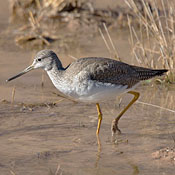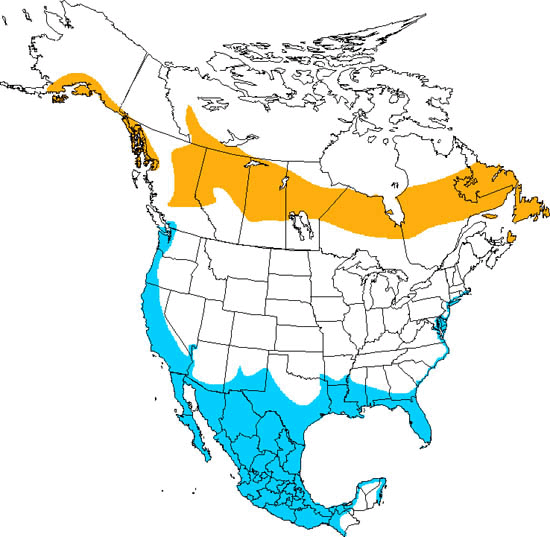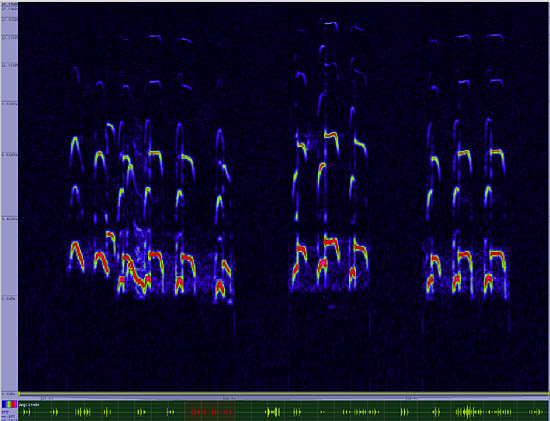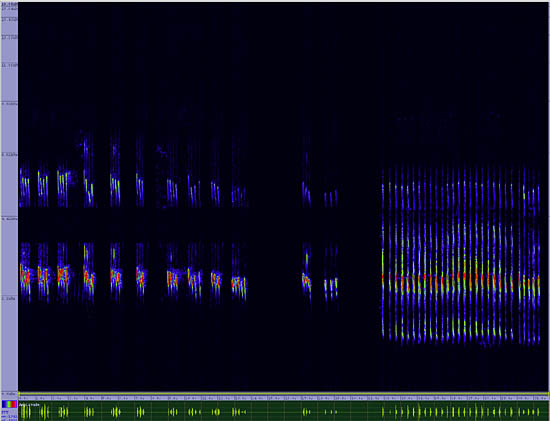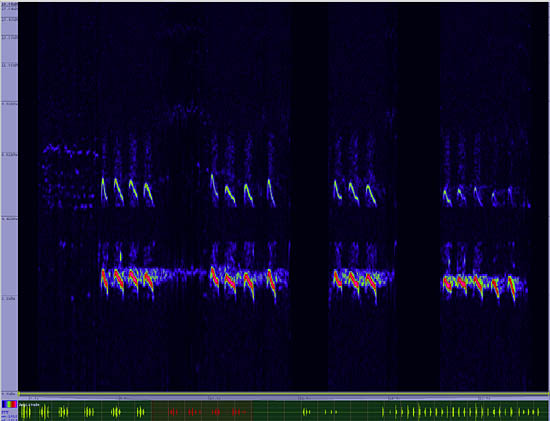Greater Yellowlegs
Tringa melanoleuca

Sandpiper Like
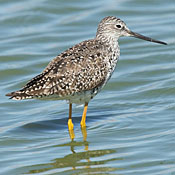
Length: 14 in. (36 cm )
This stately shorebird passes the winter in small flocks foraging in shallow fresh, brackish or salt water mudflats. They pick small fish, insects, snails worms and other small animals from the water or surface of the mud. They winter as far south as southern Argentina. On their breeding grounds along coniferous forest ponds, their nests are depression in the moss usually protected by a log or low tree bough.
The four-digit banding code is GRYE.
Bibliographic details:
- Article: Greater Yellowlegs
- Author(s): Dr. Biology
- Publisher: Arizona State University School of Life Sciences Ask A Biologist
- Site name: ASU - Ask A Biologist
- Date published:
- Date accessed:
- Link: https://askabiologist.asu.edu/activities/bird/greater-yellowlegs
APA Style
Dr. Biology. (). Greater Yellowlegs. ASU - Ask A Biologist. Retrieved from https://askabiologist.asu.edu/activities/bird/greater-yellowlegs
Chicago Manual of Style
Dr. Biology. "Greater Yellowlegs". ASU - Ask A Biologist. . https://askabiologist.asu.edu/activities/bird/greater-yellowlegs
Dr. Biology. "Greater Yellowlegs". ASU - Ask A Biologist. . ASU - Ask A Biologist, Web. https://askabiologist.asu.edu/activities/bird/greater-yellowlegs
MLA 2017 Style
Be Part of
Ask A Biologist
By volunteering, or simply sending us feedback on the site. Scientists, teachers, writers, illustrators, and translators are all important to the program. If you are interested in helping with the website we have a Volunteers page to get the process started.

